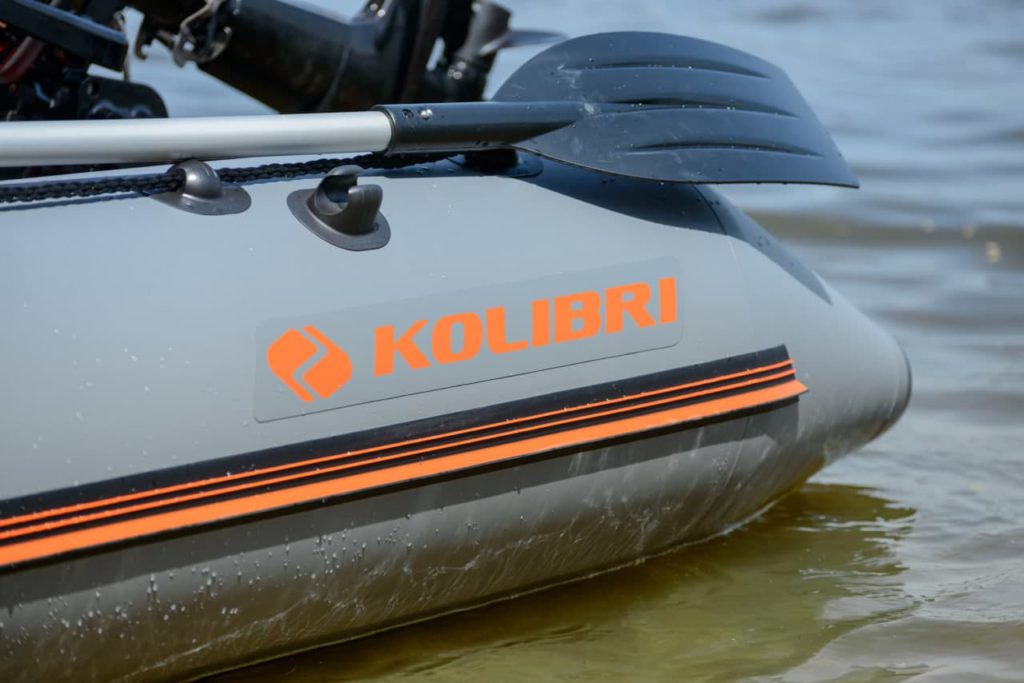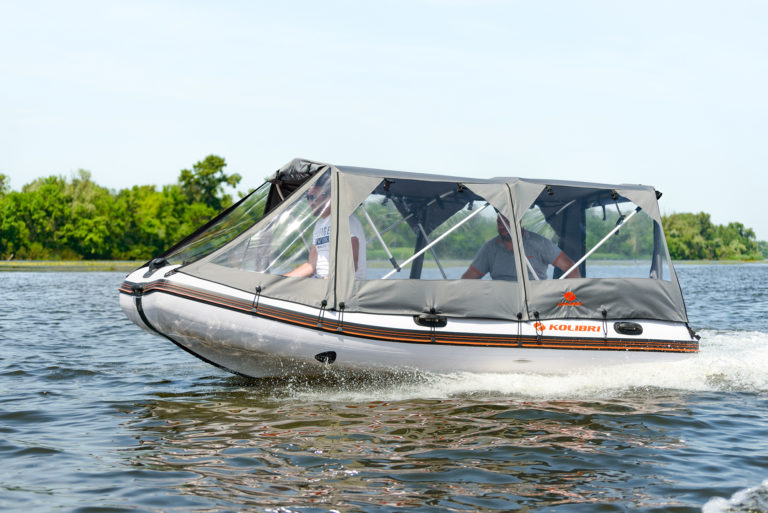PVC inflatable boat repair

During any water trip — fishing or hunting, during a difficult rafting on rough mountain rivers or during a family trip on quiet lakes, there is a chance of damage to a PVC inflatable boat. Such boats are made of a quite durable five-layer fabric, which has a different density depending on the model of the watercraft. However, a through damage to the boat’s sides, which are inflated tubes under a certain pressure, can lead to deflation, deformation and loss of buoyancy, which entails dangerous consequences on the water.
The need for repairs may arise both at home and directly during the trip. Therefore, you need to be prepared for the fact that you might have to eliminate the damage to a PVC boat in extreme conditions.
Types of damage to PVC boats
The most common damage to a boat made of PVC fabric is, of course, a puncture or a cut in the hull (bottom or inflatable tubes). Such annoying holes can occur as a result of hitting a snag or other sharp object in the water. The PVC boat hull can be inadvertently pierced from the inside — with a knife, anchor or other sharp object. Severe scuffing of the hull with subsequent violation of its integrity may occur if the watercraft is carelessly dragged along the shore. There is also a chance to burn the fabric of the boat while being moored or anchored if the boat is located on the shore too close to the fire.
In addition to damage to the integrity of the PVC fabric on the sides and bottom, other damage to the boat may occur, for example:
- damage to rowlocks
- damage to the motor transom
- valve damage
- pump breakage
- floorboard damage
It’s better to entrust the repair of complex damages to professionals, this will save your time and protect the boat from possible wrong actions. The service center is always ready to bring any model of boats manufactured by KOLIBRI Boat Manufacturing Company into working condition.
Tools and materials for a PVC boat repair
To repair a PVC boat, you will need a minimum set of materials and tools:
- piece of PVC fabric;
- a special glue;
- a smooth solid object or roller (for smoothing);
- a heat gun or a household hair dryer;
- scissors or a knife;
- wipes or wiping cloth;
- acetone (or other means for degreasing glued surfaces).
How to find a damage to a boat
If the damage to your boat is a cut or a puncture of the PVC hull, but it is not visually visible, use a simple way to detect a small hole: cover the supposedly damaged area of the boat hull with a foam soap solution and press the tubes — you will see growing bubbles where the leak point is.
How to fix a cut or puncture in the boat hull
Small cuts or punctures (up to 5 cm) can easily be repaired by yourself, even in field conditions, using a standard repair kit. To do so, you need to first determine where exactly the puncture is located, then clean, dry and degrease the damaged area well. Next, using a pencil, you need to mark the contours of the patch on the hull, cut out the patch — its should be larger in size than the damaged area by about 2 cm at the edges. The outside of the PVC fabric is matte, on the inside it’s glossy. Place the boat on a flat hard surface for the convenience of repair. Apply glue to the damaged part of the boat and to the patch, then connect them by pressing and smoothing the place with any flat, smooth object or a special roller. You also need to learn how to apply a specific glue, as sometimes you first need to wait for 10-15 minutes after you applied glue, and only then connect the parts. If you want to glue the patch better, you may preheat the place of gluing with a hair dryer. Nevertheless, it’s not that easy to use a hair dryer in field conditions, of course.
If the puncture is large, you can use several patches of different sizes. First, you need to glue the first patch, as described above, and then glue another one on top of it – the second one should be several centimeters larger. This method is more reliable, especially for medium-sized damages.
After the repair, a number of simple rules should be observed so that your boat will serve you for a long time in the future:
- After repairing, a PVC boat cannot be used immediately on the water. It needs to be filled with air a little or folded carefully so that the place of gluing does not fold. It usually takes 24 hours to fully fix the glued parts.
- Do not use such glues as “Moment” or “Superglue”, they are not good for these purposes, as cracks often appear due to such glues and they cannot guarantee water resistance. Therefore, always use the glue that the boat manufacturer recommends, or even better – glue from the repair kit.
- If the damage on the boat is more than 15 cm in length, it is better to seek help from the service center of the KOLIBRI Boat Manufacturing Company.
- Do not use an open fire to heat the parts being glued together. You can overheat, melt the fabric or start a fire. An ordinary household hair dryer or a heat gun is good for these purposes.
How to minimize the tuning of a PVC boat
When buying a PVC boat, you should pay attention if there is a repair kit in the basic set, and you also need to choose a boat with a certain density of fabric for specific purposes – lightweight fabric (750-850 gr/m²) for boats that you are going to use for trips and recreation, a thicker fabric (1100 gr/m²) – for more significant purposes.
Any KOLIBRI PVC boat contains a ZIP (repair kit) consisting of a patch and a tube of special glue.
The quality of the boat of course affects how often you will repair it. Here, more than ever, applies the rule “a miser pays twice”, since a bad quality of your boat is not only an additional cost for its repair, but also a danger to the safety on the water — of you and your loved ones.
Simple rules for safe and optimal use of the boat will also help you avoid unpleasant situations with repairs:
- Keep sharp objects in covers so as not to accidentally damage the hull of the inflatable boat.
- Handle the fire carefully while moored or anchored and inside the boat.
- Pay attention to the area where your boat is used — low water level, shallow water, snags and other various objects in the water carry a potential risk of damage to the hull. Rocky shores and bottom can also be dangerous for the PVC fabric.
- We recommend choosing high-quality branded PVC inflatable boats – and that is how you will find yourself repairing your boat, as rarely as possible.





